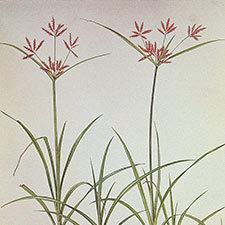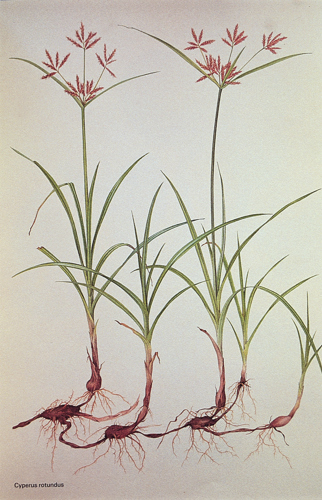 Purple nutsedge
Purple nutsedge
Common name: Purple nutsedge
Botanical name: Cyperus rotundus
Management category: Advisory
Purple nutsdege was named due to its tubers that look like nuts. It is native to Africa, southern and central Europe and southern Asia. Purple nutsdege is considered an invasive species in over 90 countries.
Why is it a pest?
- Outcompetes other plant species by releasing toxins into the soil that kills competing vegetation. Also takes a lot of moisture from the soil.
- Very difficult to control due to extensive tuber system.
- Most herbicides will cause dieback on the leaves, however rarely affect the tubers.
- If left uncontrolled, this plant will establish and take over crops, pasture and home gardens.
- The roots are very strong and can penetrate through asphalt.
Where is it found?
Purple nutsedge likes temperate areas and will grow in a variety of soils and habitats. It is a particular problem for cropping. It moves around through soil movement (seeds and tubers).
It is found throughout the Bay of Plenty region.
What does it look like?
- Grows approximately 50cm high.
- Flowers are reddish-purple and the seeds fall easily from the plant.
What are the rules?
Advisory
Council does not enforce the control of advisory species. It is landowner/ occupier responsibility to manage these pests. Council may provide advice on how to manage or control advisory species if required.
How do you get rid of it?
Most herbicides only allow for limited control. Digging the plant out can cause fragmentation of the roots and tubers. This plant will need repetitive chemical control or manual removal. Any plant material that is removed needs to be disposed of in general waste. Always be prepared for new growth and treat as early as possible.
CAUTION: When using any herbicide or pesticide, PLEASE READ THE LABEL THOROUGHLY to ensure that all instructions and directions for the purchase, use and storage of the product, are followed and adhered to.
Read more on pest control advice, information and regulations.

